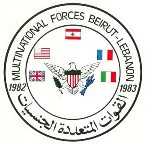SeaQueen
Posts: 1451
Joined: 4/14/2007
From: Washington D.C.
Status: offline

|
quote:
ORIGINAL: thewood1
In scenarios after the 80s, civilian aircraft should all have transponders to ID themselves. For some reason, a lot of scenario designers don't use that capability. Although, you might still have ROEs that visual ID is required.
Squawking the right modes and codes is definitely important. I think the thing that concerns people is how to model is correctly. There's many different transponder modes. Modes 1 and 2 are military only. Mode 3 is the normal everyday civilian transponder. Mode 4 is encrypted military only. Military aircraft may be squawking one, some or all of those modes, depending. Civilian aircraft would only squawk mode 3. The thing is, just because someone isn't squawking the right modes and codes, it might tell you a unit is friendly, but squawking the wrong ones doesn't mean they're hostile, just that you don't know.
Another name for the transponder is secondary radar. For civilian aircraft, there's no good reason to not want everyone to be able to see where you're at. Even VFR aircraft squawk 1200 on Mode 3. There's actually a button that will make your blip big on the radar when an air traffic controller needs to pick you out of the crowd. They'll say something like, "Cessna 1234 squawk ident." When that happens you push the button and your blip gets big. If something goes wrong in the plane, you want to be found by emergency services. So, when a properly equipped radar pings transponder equipped aircraft, the transponder responds with "Here I am! This is the code I'm squawking! My altitude is this!"
Military aircraft might want to be less obvious, so they use different modes, and might not be squawking at all in order to avoid revealing their position when their transponder is pinged. That means that sometimes they might have their transponder off. That being said, civilian aircraft aren't REQUIRED to have their transponder on all the time, so they might choose to fly without one. An example might be if my transponder is broken, and I wanted to move my plane from a place where they can't fix avionics to an airport where there was a shop. Of course, there'd be constraints on that which depended on airspace regulations.
So... transponders are a bit of a puzzle. They don't tell you everything you want to know, but they might help eliminate a few aircraft out of a crowd.
|
 Printable Version
Printable Version








 ) and gives the player a bit of a problem to sort out. Is one aircraft an RC-135 along my coast or is it KAL-007?
) and gives the player a bit of a problem to sort out. Is one aircraft an RC-135 along my coast or is it KAL-007? 


 New Messages
New Messages No New Messages
No New Messages Hot Topic w/ New Messages
Hot Topic w/ New Messages Hot Topic w/o New Messages
Hot Topic w/o New Messages Locked w/ New Messages
Locked w/ New Messages Locked w/o New Messages
Locked w/o New Messages Post New Thread
Post New Thread